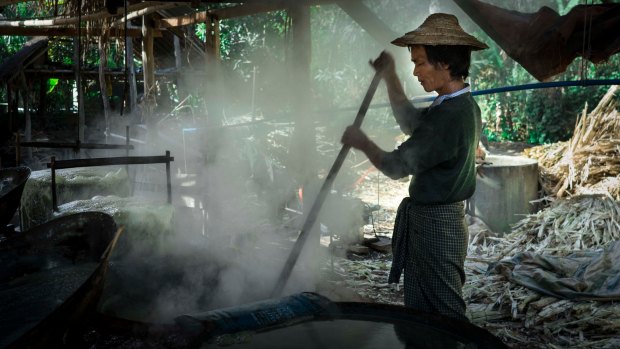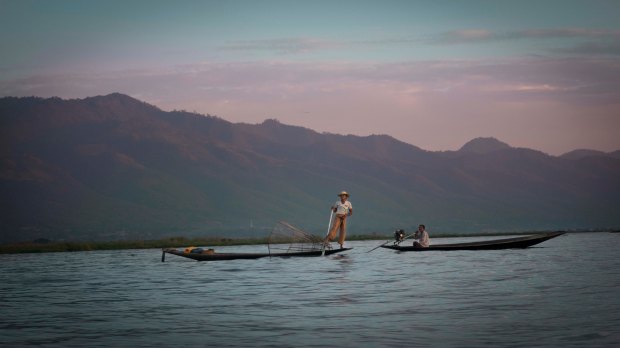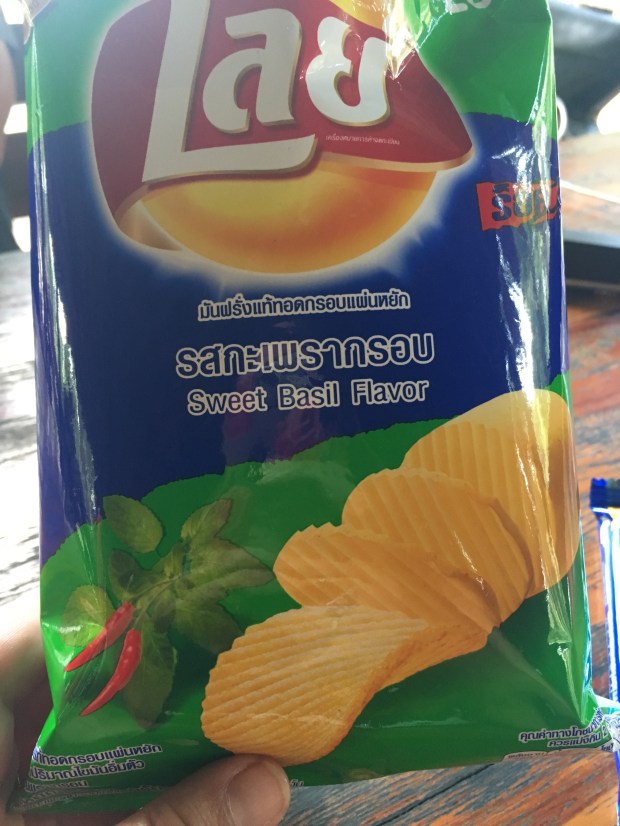Myanmar was the high point of our 3 month trip to Southeast Asia. There are so many things that I can go on and on about but I will begin by sharing our two week itinerary.
Our flights in and out of Myanmar and all our hotels/hostels were all pre-booked ahead of time. We had read that finding a place to stay upon arrival can be tricky but not necessarily impossible. Everything else – our bus tickets, tours, bike rentals, etc. were booked through the hotel/hostels typically a day in advance.
YANGON (3 days)
DAY 1: We flew into Yangon from Kuala Lumpur and arrived early in the morning. The Visa on Arrival process was surprisingly quick and easy ($50 USD/per person). We pulled cash from an airport ATM (they had a few to choose from) and had a quick cup of coffee while using the airport wifi to get our bearings. From there we took a taxi to our hotel and had a small bite to eat before hitting the streets. The Sule Pagoda was walking distance from where we were staying so we went there first, followed by a two hour ride on the circle train (blog post coming soon), a walk to Kandawgyi Lake, and fancy dinner at White Rice.
DAY 2: Breakfast at the hotel was $3 USD for eggs, beans, fruit, chicken, potatoes, and veggies. We then decided to take the ferry to Dala Village which turned out to be a major scam. I will go into detail on the scam in a separate post but for now I recommend skipping Dala altogether. If you do decide to check it out, refuse the tour guide that is offered at the ferry ticket office and explore the village on your own. If you take a rickshaw be sure to negotiate the FINAL cost before accepting a ride. The half day excursion across the river ended up costing us over $150 USD!!! The village itself was beautiful but the sham left us feeling depressed and upset. After lunch a couple drinks at the Black Hat to lighten our spirits, we took a taxi to Shwedagon Pagoda to watch the sunset. Finally, we went to Inya Lake for a fancy and authentic Italian dinner at L’Opera.
DAY 3: Feeling like we’d seen most everything on our list, we spent our final day getting brunch at the Bruch Society, drinks at the Sule Shangri-La Hotel, and unsuccessfully searching the city for a Myanmar soccer jersey. After checking out of our hotel and grabbing our luggage, we took an hour long taxi ride to the bus station to catch our 13 hour (overnight) bus ride to Nyaung Shwe
- Taxi from the airport to the city center: $6 USD
- Taxi from hotel to bus station: $5 USD
- Overnight bus (JJ Express) to Nyaug Shwe: $20 USD
- Circle Train Ticket: Less than 10 cents per person!
- Hotel: Clover City Center Hotel – $37.50 USD/night
- Shwedagon Pagoda Entrance Fee: $5 USD
- Best things to do/see: Sule Pagoda , Circle Train (my personal favorite), Kandawgyi Lake, Shwedagon Pagoda, Inya Lake.
***2 days in Yangon is plenty.
INLE LAKE/NYAUNG SHWE (2 days)
DAY 1: After a long and arduous overnight bus ride, we arrived in Nyaung Shwe at 7am and had breakfast at our hotel, Aquarius Inn. We then rented bikes for $1 USD (even though we had a bike tour scheduled for the next day — worst idea ever) and spent the day riding around the lake. Highlights included a private boat ride around the water village, lunch on the jetty, an uphill ride to the Forest Monastery, and wine tasting at the Red Mountain Estate Vineyards & Winery.
DAY 2: Grasshopper Adventures is a company that offers guided mountain bike tours. My ass was destroyed from the previous day of biking but I pushed through the pain. The tour lasted the entire day biking through villages and farms, stopping at a molasses farm, bakery, rice whiskey maker and monastery, followed by a boat ride, lunch at a family restaurant, and kayaking on the lake. It was a great way to see Nyuang Shwe while getting in a decent workout.
***We could have easily spent another 1-2 days in Nyaung Shwe.
MOUNT POPA (1 day)
DAY 1: From Inle Lake we took a 7 hour (mini)bus ride to Popa Mountain Resort for a quick night stay. After seeing pictures of the views from their infinity pool and restaurant deck we knew we had to make a stop at the resort. The only attraction in the area is the Mount Popa Monastery at the top of the a volcanic plug. While it looks sparkly and pristine from afar, we had heard that it’s not worth the 777 steps it takes to get to the top. Especially since the steps are guarded by hoards of monkeys and shoes are not allowed. Instead of climbing a never-ending path of monkey shit covered stairs, we opted to admire the temple from the comfort of the infinity pool in our comfy bathrobes.
- Hotel: Popa Mountain Resort – $82 USD/night
- Bus tickets from Nyuang Shwe to Mount Popa: $37 USD
- Best things to do/see: Mount Popa (that’s about it).
***There are day trips you can take directly to Mount Popa from Bagan. We basically stayed here for the view.
BAGAN (4 days)
DAY 1: The taxi ride from Mount Popa to Bagan was about an hour long. We got to our hostel, New Wave Guesthouse, in the mid afternoon and had a bite to eat before walking down the road to check out the pagodas in our immediate area. By sunset we found a nearby temple that was perfect for watching the sun go down — it would end up becoming our go to pagoda for sunrise/sunset. Enlightened by the beauty of Bagan, we walked back to our hostel and found a nearby restaurant before bedtime.
DAY 2: We woke up at 5am to catch our first Bagan sunrise at the same pagoda down the road. Getting up at the crack of dawn is worth the view, I promise. Half asleep, we went back to our hostel for complimentary breakfast while we waited for our personal tour guide to arrive. Nway Nway, our guide and new friend, took us on a day long e-bike tour to some of the more famous temples (the most beautiful one, the biggest one, the oldest one, the tallest one). We also checked out a local market, had a traditional Myanmar lunch (not appetizing and probably gave us food poisoning), smoked a cigar with some older village women, and walked through a lacquer workshop. The tour ended by visiting one of the “best” sunset viewing temples. While the view was breathtaking, it was hard to fully enjoy with hundreds of other tourists (we personally preferred watching from the less popular/less crowded temples).
DAY 3: By this time we felt comfortable enough to rent e-bikes and explore pagodas on our own. The day was spent riding from pagoda to pagoda looking for secret passages to climb up. There were times where we had temples all to ourselves. In the evening we rode to a nearby pagoda festival to listen to live music and buy some traditional clothing (at way cheaper prices than the tourist markets). It was a nice glimpse into the lives of the natives (we ended up being the only tourists there!).
DAY 4: We loved Bagan so much that we added another day for more pagoda hopping and a visit to the museum. The hostel was able to add another night to our stay without any trouble.
- Taxi from Mount Popa Resort to Bagan: $40 USD
- Hotel: New Wave Guesthouse – $35 USD/night
- Personal Tour Guide (arranged through our hotel) – $57 USD (including tip)
- E-Bike Rental: $5 USD/per day
- Main Pagodas Tourist Entrance Fee: $18.50 USD (all other pagodas are free)
- Bagan Museum Entrance Fee: $3.50 USD
- Best things to do/see: pagodas, pagodas, and more pagodas.
MANDALAY (4 days)
DAY 1: We caught our final sunrise in Bagan at 6am before getting picked up at our hotel for a 5 hour bus ride to Mandalay. After checking into our hostel, Four Rivers B&B, we took to the streets in search for food. We found a small locals restaurant nearby where we consumed delicious bowls of noodle soup for under $2! In the evening we took a rickshaw to a pagoda festival where we stood out like sore thumbs being the only tourists in sight. We rode the man operated ferris wheel, played some carnival games, and watched a portion of the live music/dance show. Best night in Mandalay, by far.
DAY 2: Our second day was booked with a group tour organized by the hostel. 9 tourists split between two taxis making stops at a monastery, silk factory, a couple pagodas, lunch by the river, a visit to a small village, and sunset at the U Bein Bridge. We ended up getting dinner with a few friends that we had made in our tour group.
DAY 3: Since the Royal Palace and Mandalay Hill were not visited on our previous tour day, so we decided to check them out with our new friends. In the evening we went to an amazing Chinese restaurant, Super 81, and then capped off the night drinking beers on the roof of the hostel.
DAY 4: For our fourth and final day in Mandalay we made it our mission to find Myanmar soccer jerseys. We had searched in every other city but came up empty handed. It seemed to be an impossible operation but after a half a day of searching all over the city, we prevailed. With said jerseys in hand, we took a taxi to the airport and headed back to Thailand.
- Hostel: Four Rivers B&B – $20 USD/night
- Mandalay Archaeology Tourist Fee: $7 USD
- Royal Palace Entry Fee: $1 USD
- Best things to do/see: Pagoda Festival, U Bein Bridge, Royal Palace, and Mandalay Hill
***2 days is all you really need in Mandalay. If we were to do it over, we would skip one of the big cities (Yangon/Mandalay) and either add more days to Inle/Bagan or check out the beaches in the south of Myanmar.
****Additional Expenses: Visa Application: $50 USD, SIM Card: $12 USD (for 2 weeks)
****There are cheaper and more expensive accommodations, ways of transportation, and tours. Most of the time we tried to go with cheap options and once in awhile we would splurge (ex. Mount Popa Resort).
FINAL PIECE OF ADVICE: Go to Myanmar as soon as you can. It won’t be long before Starbucks and McDonalds start popping up and taking over.
More Myanmar albums coming soon to our PHOTOS page!
Here is a quick video of our trip as well…

































































































